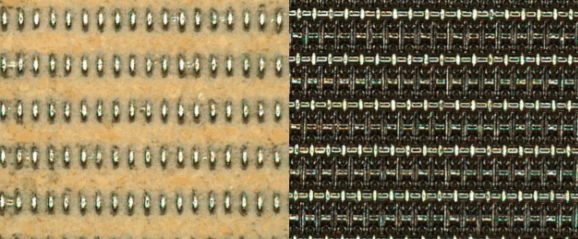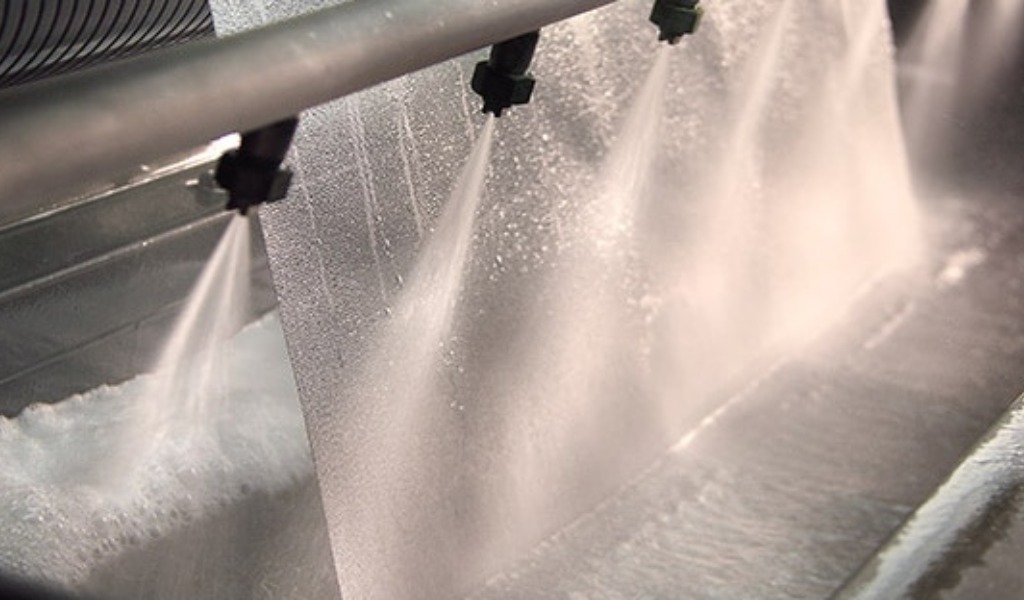Maintaining Woven Wire Mesh: Understanding the Best Practices
Know for its durability, customization capabilities, and versatility, woven wire mesh is a screening/filtration media that stands out amongst similar materials. But like most tools and equipment throughout your facility, woven wire requires regular maintenance to maintain desirable performance.
As W.S. Tyler has been in the woven wire business for over 150 years, we understand that maintaining your mesh can be tricky and want to help you create a tailor-made process. For this reason, we put together a blog post that breaks down the essential maintenance techniques you should be implementing, as well as why they are vital to your success.
And with that, the following article will cover:
- The importance of maintaining woven wire mesh
- The ways you can best maintain your woven wire mesh
- The consequences of not maintaining your woven wire mesh
- How maintaining your woven wire mesh can affect your operational expenses
Why Is Maintaining My Woven Wire Mesh Important?

While woven wire mesh is known for its durable characteristics, maintaining the material is vital to the performance of your operation. It is inevitable that the elements to which your system subjects the mesh will create the need to replace your mesh.
But, proper maintenance will extend the lifespan of your woven wire components, reducing costly downtime and frequent replacements. Not to mention, a regular maintenance routine works to keep your mesh performing with the highest efficiency and safety.
Best Ways To Maintain Woven Wire Mesh
Implementing best practices when it comes to woven wire maintenance is key to the longevity and performance of your woven wire solution. That said, the maintenance techniques you should keep in mind include maintaining a consistent cleaning routine, conducting visual inspections, properly storing your mesh, and using your mesh as intended.
Consistent Cleaning Routine
Keeping your mesh clean is critical to preventing premature wear and corrosion, preserving the integrity of the pore openings. It is highly encouraged to implement a regular cleaning routine that thoroughly removes dirt, residual material, and other contaminants from both the mesh surface and pore openings.
This can be done using tools like cleaning brushes or compressed air. For an in-depth look into how you can keep your woven wire pristine, read the article below:
Visual Inspections
Visual inspections are the best and easiest way to detect worn, torn, or otherwise damaged woven wire mesh. During a visual inspection, you should look out for loose wires, unusual bends, or any structural concerns that can cause issues within your process.
That said, if any concern faults are detected, it is recommended that the woven wire component be replaced. This can be the component in its entirety or repairing specific sections on larger components.
Proper Storage
When not in use, proper storage of woven wire components is critical. If your mesh is not kept within your system, it should be stored in a dry area free of debris.
It is of the utmost importance to ensure no moisture is present. This will help prevent things like rust and other forms of corrosion.
Use as Intended
To ensure a prolonged lifespan, you should always use your mesh within the usage tolerances in which it was designed for. This means parameters, such as proper tension and pressure loads, should be monitored and fall within a specific threshold.
This will help maintain the structural integrity of the mesh, preventing things like deformation and faults.
What Happens if I Don’t Properly Maintain My Woven Wire?
Failing to properly maintain woven wire mesh can lead to a substantial list of concerns over time. First and foremost, neglecting to properly clean your mesh regularly will lead to a troublesome accumulation of debris in the pore openings.
This will eventually translate to inefficient/inaccurate separation/filtration. With that, altered product quality can be expected alongside legal, regulatory, and customer retention concerns.
To that end, you also run the risk of premature wear and tear.
The structural integrity of your woven wire is also put at risk when not properly maintained. More specifically, lack of maintenance can make bent or broken wires more common.
But if poor woven wire maintenance can be summed up in a quick statement, it would be that improper woven wire maintenance often leads to low-performing mesh that doesn't last as long and even creates safety concerns.
How Does Woven Wire Maintenance Affect My Expenses?
As stated above, how well you maintain your woven wire will determine how long it lasts. This means that if you fail to properly maintain your mesh, you will ultimately spend more money repairing or replacing it.
Diving deeper, the performance of your wire mesh over time is heavily influenced by how well it is maintained. If your mesh is poorly maintained, it won't perform as well, potentially leading to increased energy and resource requirements to achieve the needed results.
In other words, maintaining your woven wire mesh is essential to getting a desirable return on your investment.
When in Doubt, Know What To Look For
Establishing a regular maintenance routine is key to achieving revenue getting woven wire success. When done proactively and strategically, maintaining your mesh ensures it delivers safe, effective performance that lasts.
Now, wear and tear is inevitable no matter how well-maintained your woven wire mesh is. That said, it is important to know what to look for when faults begin to form, as some are less obvious than others.
Having helped countless industries make the most of woven wire mesh for over 150 years, W.S. Tyler is dedicated to making your woven wire concerns a thing of the past. This, in turn, will allow you to spend more time fine-tuning other aspects of your operation.
To learn more about the faults you should be mindful of when utilizing woven wire mesh, read the article below:
About Ronnie Brown
Ronnie is the Content Writer for W.S. Tyler and has four years of experience as a professional writer. He strives to expand his knowledge on all things particle analysis and woven wire mesh to leverage his exceptional writing and graphic design skills, creating a one-of-a-kind experience for customers.




